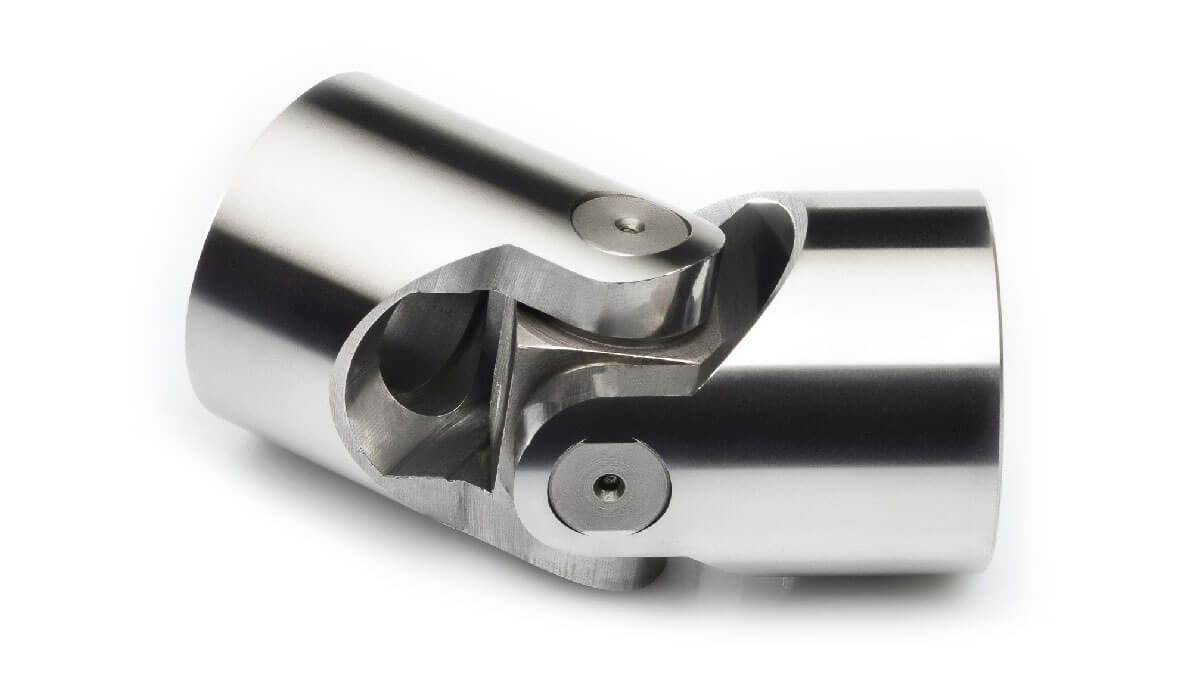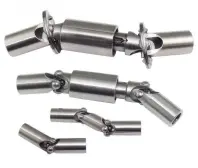Product Description
Universal joint description
1>it is FOB HangZhou price . (also can send free to HangZhou HangZhou /ning bo ZheJiang and so on. warehouse .)
2>the material is 20cr good material , must not any complain from your customers. (also have 20Mn . 20cr Mn Ti )
3>our delivery time is 40days (with 20Gp container ) . very in time .
4> Can develop according to customer’s drawings or samples
5> OEM is available
6> Full range for the universal joint
7> Good quality and resonable price
Packaging & Delivery
the packing . Standard netural packing with carton.
Delivery detail: 30-45 working days,depend on the actual produce condition
FAQ
Q1: What is the location of your company?
A1: Our company is located in the CHINAMFG Zhou(Jin jiang) City ,Fu jian province,China.Welcome to visit our factory at anytime!
Q2: How does your factory do regarding quality control?
A2: Our standard QC system to control quality(TS16949 2016).
Q3: What is your delivery time?
A3: Usually within 30-40 days after the receipt of payment.Delivery time must depend on the actual produce condition.
Q4: What are your strengths?
A4: 1.We are the manufacturer,having competitive advantage in price.
2.A large part of money is put into advancing CNC equipments and product
R&D department annual,the performance of universal joint can be guaranteed.
3.About quality issues or follow-up after-sales service,we report directly to the boss.
Specification
There is no uniform standard for the specifications of cross assemblies. Please contact us directly for confirmation.
/* January 22, 2571 19:08:37 */!function(){function s(e,r){var a,o={};try{e&&e.split(“,”).forEach(function(e,t){e&&(a=e.match(/(.*?):(.*)$/))&&1
| Condition: | New |
|---|---|
| Color: | Natural Color |
| Certification: | CE, ISO |
| Structure: | Single |
| Material: | Stainless Steel |
| Type: | 20mn 20cr 20crmnti |
| Samples: |
US$ 49.7/Piece
1 Piece(Min.Order) | |
|---|
| Customization: |
Available
| Customized Request |
|---|

How do you properly maintain and lubricate a universal joint?
Maintaining and lubricating a universal joint is essential to ensure its smooth operation, extend its lifespan, and prevent premature failure. Here’s a detailed explanation of the proper maintenance and lubrication process:
To properly maintain and lubricate a universal joint, follow these steps:
- Consult Manufacturer Guidelines: Refer to the manufacturer’s guidelines and recommendations specific to the universal joint being used. Manufacturers often provide detailed instructions regarding maintenance intervals, lubrication types, and procedures. Familiarize yourself with these guidelines before performing any maintenance or lubrication.
- Inspect the Joint: Regularly inspect the universal joint for signs of wear, damage, or misalignment. Look for indications of excessive play, corrosion, fatigue, or any other abnormalities. Inspecting the joint allows you to identify potential issues before they escalate. If any problems are detected, address them promptly to prevent further damage or failure.
- Clean the Joint: Before applying lubrication, clean the universal joint to remove any dirt, debris, or old lubricant that may have accumulated. Use a suitable cleaning agent or solvent recommended by the manufacturer. It’s important to have a clean surface for effective lubrication.
- Select the Proper Lubricant: Choose the appropriate lubricant specified by the manufacturer. The type of lubricant required may vary based on factors such as the universal joint design, operating conditions, and temperature range. Common lubricants used for universal joints include grease or oil. Ensure that the selected lubricant is compatible with the joint’s materials and operating environment.
- Apply Lubricant: Apply the lubricant to the universal joint according to the manufacturer’s instructions. Pay attention to the specific lubrication points, such as the bearing caps, needle bearings, or trunnions. Use the recommended amount of lubricant to ensure proper coverage and distribution. Avoid over-lubrication as it can lead to excessive heat generation and increased friction.
- Operate the Joint: After lubrication, operate the universal joint to distribute the lubricant evenly and ensure it reaches all necessary components. Rotate or move the joint through its full range of motion several times to facilitate the spreading of the lubricant and to verify smooth operation. This step helps to eliminate any air pockets and ensures that all surfaces are adequately lubricated.
- Monitor and Reapply: Regularly monitor the universal joint’s performance and lubrication condition. Periodically check for any signs of lubricant breakdown, contamination, or leakage. Depending on the manufacturer’s recommendations, reapply lubrication at specified intervals or when necessary to maintain optimal operation. Factors such as operating conditions, load, and temperature may influence the frequency of lubrication.
- Keep Records: Maintain a record of the universal joint’s maintenance activities, including lubrication dates, lubricant type, and any observations made during inspections. These records can help establish a maintenance schedule, track the joint’s performance over time, and serve as a reference for future maintenance or troubleshooting.
By following these steps and adhering to the manufacturer’s guidelines, you can properly maintain and lubricate a universal joint, promoting its longevity, reliability, and optimal performance.

What materials are commonly used in the construction of universal joints?
Universal joints are constructed using various materials that provide strength, durability, and resistance to wear and fatigue. Here’s a detailed explanation:
The choice of materials for universal joints depends on factors such as the application, load requirements, operating conditions, and cost considerations. Here are some commonly used materials:
- Steel: Steel is one of the most common materials used in universal joint construction. Alloy steels, such as 4140 or 4340, are often employed due to their high strength, toughness, and resistance to wear and fatigue. Steel universal joints can withstand heavy loads and harsh operating conditions, making them suitable for various industrial applications.
- Stainless Steel: Stainless steel is chosen for universal joints when corrosion resistance is a critical requirement. Stainless steel alloys, such as 304 or 316, offer excellent resistance to rust, oxidation, and chemical corrosion. These joints are commonly used in applications where exposure to moisture, chemicals, or harsh environments is expected.
- Cast Iron: Cast iron is occasionally used in universal joints, particularly in older or specialized applications. Cast iron provides good strength and wear resistance, but it is generally heavier and less flexible than steel. It may be used in specific situations where its properties are advantageous, such as in large industrial machinery.
- Aluminum: Aluminum universal joints are utilized when weight reduction is a priority. Aluminum alloys offer a good balance of strength and lightweight properties. These joints are commonly found in applications where weight savings are crucial, such as aerospace, automotive, or robotics.
- Bronze: Bronze is sometimes used for bearings or bushings within universal joints. Bronze alloys provide good wear resistance, low friction, and the ability to withstand high temperatures. They are often employed in applications where self-lubricating properties and resistance to galling are required. Bronze bearings can be found in universal joints used in heavy machinery, marine equipment, or agricultural machinery.
It’s worth noting that the specific choice of materials may vary depending on the manufacturer, application requirements, and industry standards. Different combinations of materials may also be used for different components within a universal joint, such as the yokes, crosses, bearings, or seals, to optimize performance and durability.
In summary, universal joints are commonly constructed using materials such as steel, stainless steel, cast iron, aluminum, and bronze. The selection of materials depends on factors like strength, durability, wear resistance, corrosion resistance, weight considerations, and specific application requirements.

What lubrication is required for a universal joint?
Proper lubrication is crucial for the smooth and efficient operation of a universal joint. The type and amount of lubrication required may vary depending on the specific design and manufacturer’s recommendations. Here are some general guidelines:
- High-quality lubricant: It is important to use a high-quality lubricant that is specifically recommended for universal joints. Consult the manufacturer’s guidelines or technical documentation to determine the appropriate lubricant type and viscosity for your universal joint.
- Grease or oil: Universal joints can be lubricated with either grease or oil, depending on the design and application requirements. Grease is commonly used as it provides good lubrication and helps to seal out contaminants. Oil can be used in applications that require constant lubrication or when specified by the manufacturer.
- Quantity of lubrication: Apply the recommended quantity of lubricant as specified by the manufacturer. Over-greasing or under-greasing can lead to problems such as excessive heat, increased friction, or inadequate lubrication. Follow the manufacturer’s guidelines to ensure the optimal amount of lubricant is applied.
- Lubrication points: Identify the lubrication points on the universal joint. These are typically located at the cross bearings or bearing cups where the cross interfaces with the yoke. Apply the lubricant directly to these points to ensure proper lubrication of the moving components.
- Lubrication intervals: Establish a lubrication schedule based on the operating conditions and manufacturer’s recommendations. Regularly inspect and lubricate the universal joint according to the specified intervals. Factors such as operating speed, load, temperature, and environmental conditions may influence the frequency of lubrication.
- Re-lubrication: In some cases, universal joints may have provisions for re-lubrication. This involves purging old lubricant and replenishing it with fresh lubricant. Follow the manufacturer’s instructions for the re-lubrication procedure, including the recommended interval and method.
- Environmental considerations: Consider the operating environment when selecting the lubricant. Factors such as temperature extremes, exposure to moisture or chemicals, and the presence of contaminants can affect the choice and performance of the lubricant. Choose a lubricant that is suitable for the specific environmental conditions of your application.
- Maintenance and inspection: Regularly inspect the universal joint for signs of inadequate lubrication, excessive wear, or contamination. Monitor the temperature of the joint during operation, as excessive heat can indicate insufficient lubrication. Address any lubrication issues promptly to ensure the proper functioning and longevity of the universal joint.
Always refer to the manufacturer’s recommendations and guidelines for lubrication specific to your universal joint model. Following the proper lubrication practices will help optimize the performance, reduce wear, and extend the lifespan of the universal joint.


editor by CX 2024-04-22